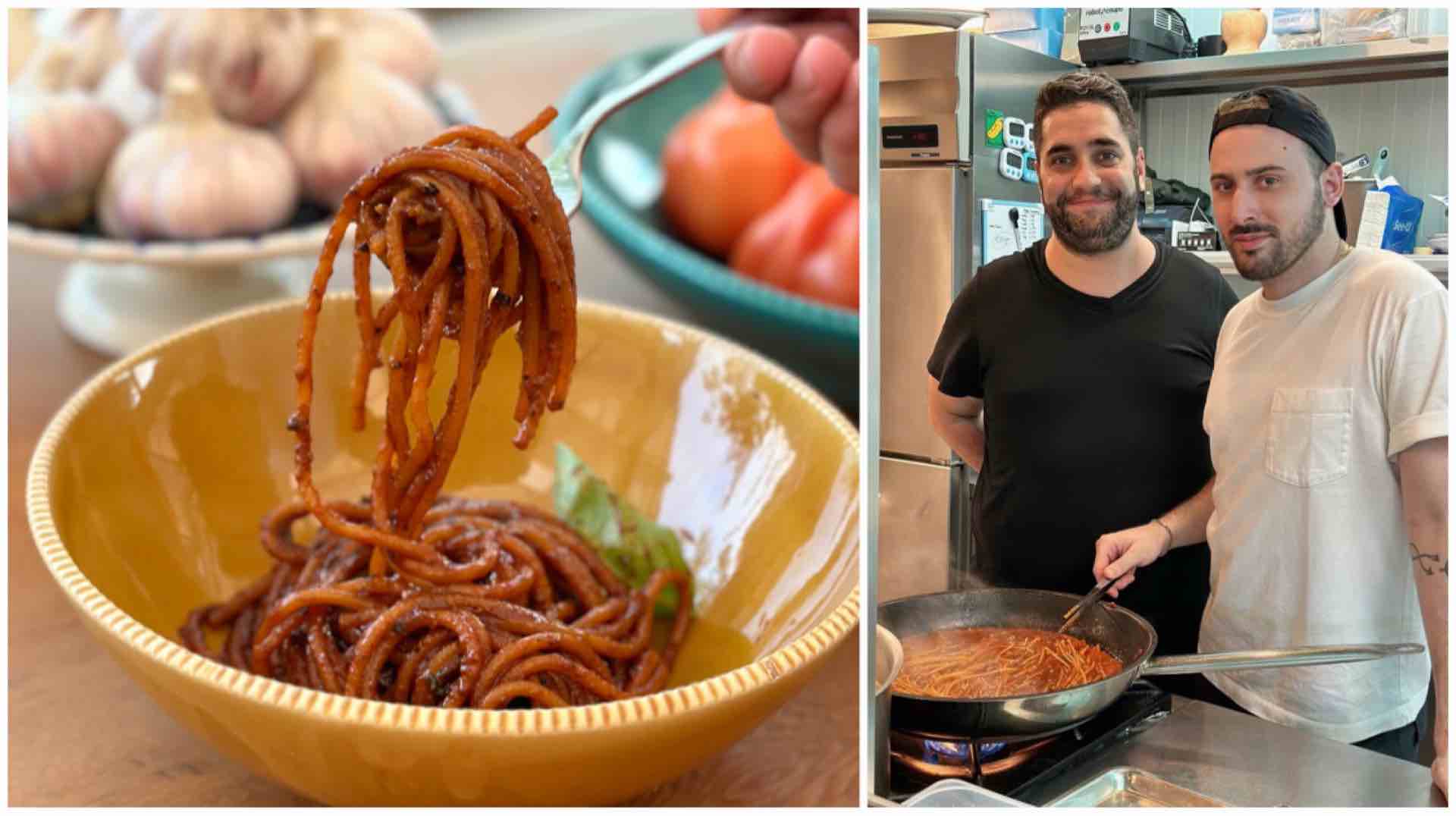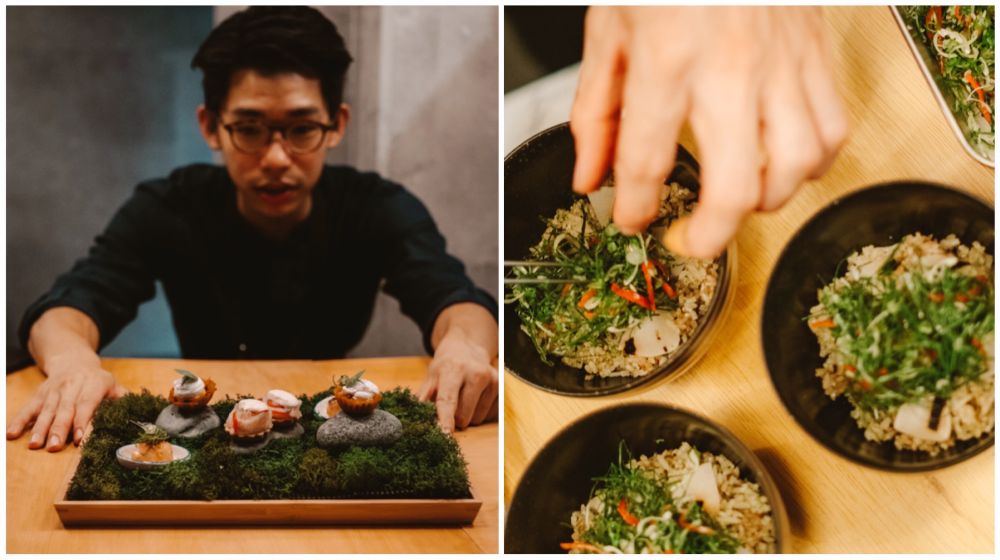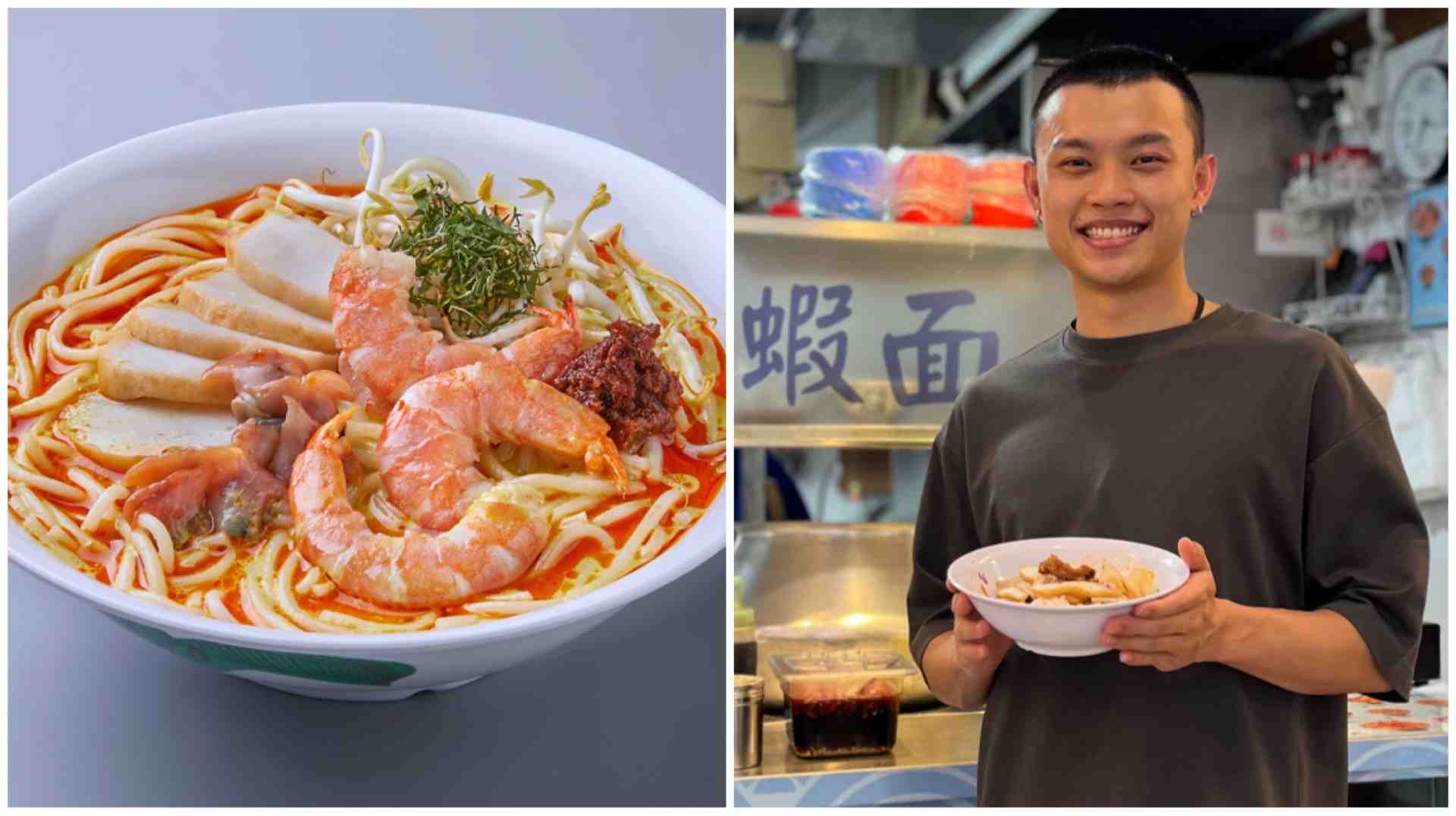This Spaghetti All'Assassina Recipe Is A Must-Try For Pasta Lovers
If you consider yourself a foodie, then you’ve probably heard of Fico at East Coast Parkway. And if you’ve heard of Fico then you know that scoring a reservation at this gorgeous Italian restaurant is even more fraught than buying Taylor Swift concert tickets.
Bookings open two months in advance and are snapped up faster than you can say "ciao". Dedicated diners set their alarms and drop everything to snag their reservation as soon as their intended dates open. Which is exactly what you must do if you want a taste of chef-owner Mirko Febbrile’s hearty, rustic cuisine.
We know that the FOMO is real. So we asked Mirko if he would make us a special pasta dish that we can recreate at home. We eventually decided on the Pugliese speciality Spaghetti All’Assassina (assassin’s spaghetti).
According to Bari lore (Bari is the capital of Puglia), this dish’s history can be traced back to 1967, when a chef named Enzo Francavilla at Osteria al Sorso Preferito burnt a serving of spaghetti in tomato sauce, but served it anyway with a shake of red pepper flakes on top.
“When one of the women saw it, she said, ‘you must be trying to kill me’, so that’s why it’s called Spaghetti All'Assassina,” said Mirko. “This is a typical dish from the Bari area and there are restaurants in Bari that serve a whole menu of assassina with different toppings like burrata, octopus or braciola (horse meat stew).”
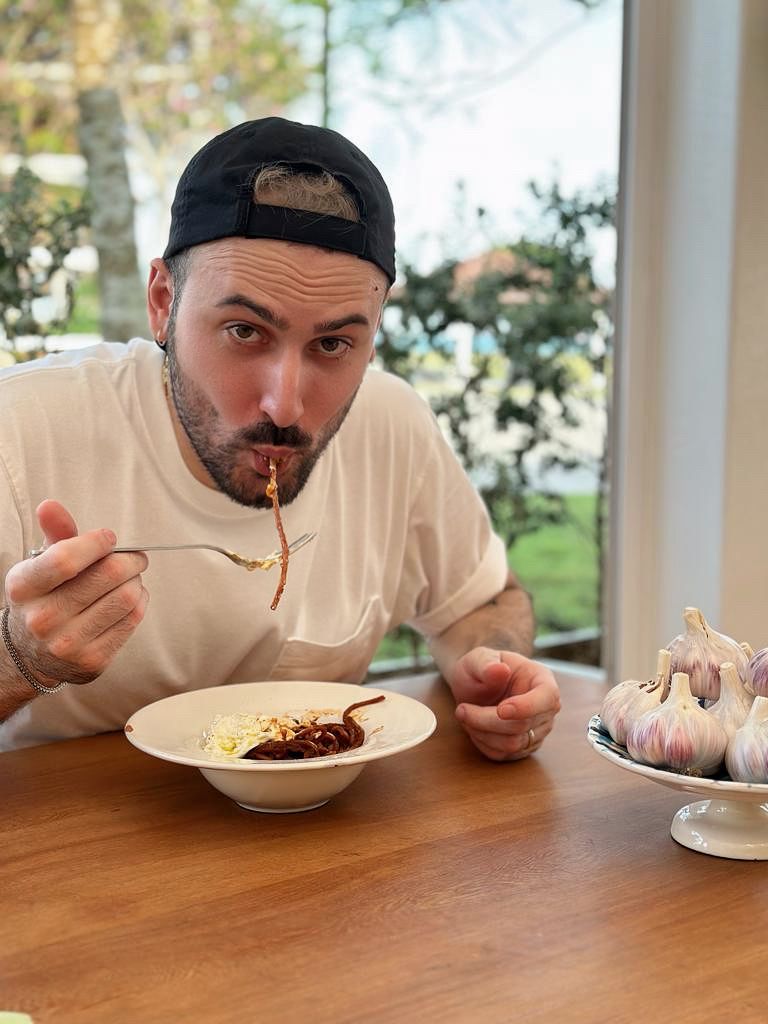
Chef-owner Mirko Febbrile of Fico, a casual Italian restaurant along East Coast Park. | IMAGE: ANNETTE TAN
Spaghetti All’Assassina is unique in that it is cooked using a method called "risottata", which is essentially the style of cooking risotto where you add water ladle by ladle, allowing the pasta to absorb the water before adding more. In this case, you make an easy “broth” of water and tomato puree. This method of cooking allows the pasta to absorb flavour while slowly charring in the pan so that the strands are crisp and caramelised.
When we asked Mirko why he doesn’t serve this at Fico, he replied: “Cannot, lah. We have to cook each portion individually and it takes a while to cook. We don’t have enough stove space to do that.”
I made it with Mirko and Fico’s head chef Federico Schiraldi, who is also from Puglia, in Fico’s kitchen one windy afternoon. I’m pleased to report that it is a dish that’s totes worth the effort. Here’s the recipe:
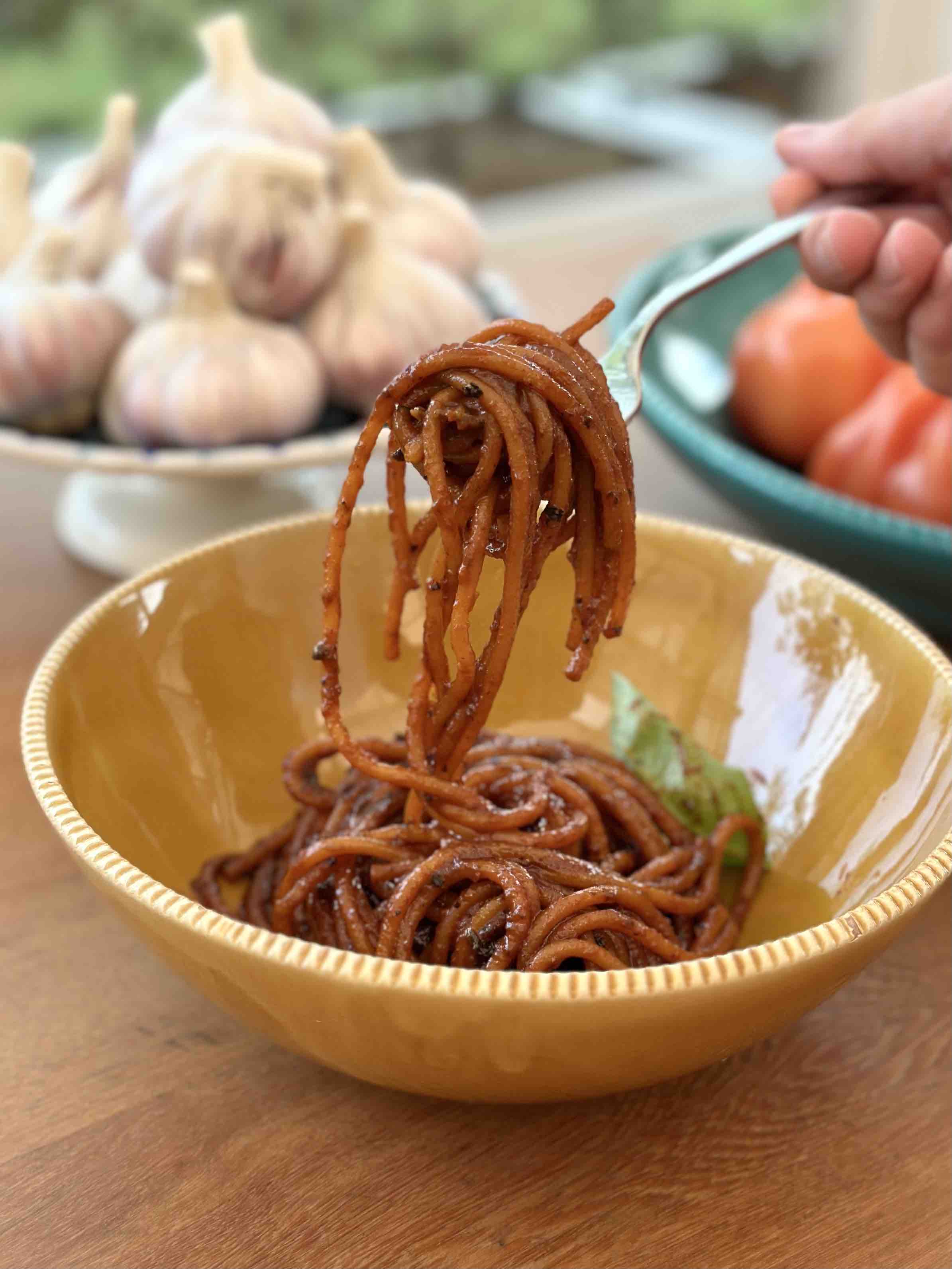 The delicious Spaghetti All’Assassina | IMAGE: ANNETTE TAN
The delicious Spaghetti All’Assassina | IMAGE: ANNETTE TAN
Spaghetti All’Assassina
Serves 2
Equipment: A 23-cm cast iron or non-stick skillet (or larger)
Cooking time: 30 minutes
- 1l water
- 2 generous tbsp tomato paste
- ½ tsp salt
- ½ cup olive oil
- 1 clove garlic, crushed
- 1 chilli padi, quartered
- 400g tomato sauce (passata di pomodoro)
- 200g spaghetti or spaghettoni*
1. Place water, tomato paste and salt in a large saucepan over medium heat.
2. Pour the olive oil in a cast iron or non-stick skillet, over medium heat. Add the garlic and chilli padi and fry till they begin to colour. Remove garlic and chilli padi from the oil and discard.
3. Pour the tomato sauce into the skillet. When the sauce begins to bubble, arrange the spaghetti in a single layer across the base of the pan. The sauce should just cover the pasta. Turn the heat up to medium-high.
4. From this point on, it is important not to move the spaghetti in the pan. You need the pasta to stay in place for the strands to eventually char as you cook.
5. When the tomato sauce reduces by about a third, add a ladle of the tomato water and shake the pan gently to help the water move around the pasta. Again, do not move the pasta around.
6. Once the pastas has absorbed the water, add another ladle of tomato water. Repeat this several times until the pasta begins cook and slink into the base of the pan.
7. After about 7 minutes, when the pasta feels like it’s half-cooked, you can gently shift the pasta strands that are not touching the base of the pan further down to the bottom of the pan. Do not move the strands that are already touching the base of the pan.
8. Reduce heat to medium and allow the pasta to cook more evenly and for the sauce to reduce. Add more water if need be. (Note: You may not end up using all the tomato water. The important thing is that your pasta is just cooked through.)
9. Using a pair of needle thongs or chopsticks, gently lift a few strands of pasta from the base to check if they are charred. If they are well-charred and the pasta is al dente (with a firm bite in the centre), you can stir the pasta around and let the tomato sauce cook down so that it is thick and caramelised.
10. Taste and add salt if necessary.
11. Transfer the pasta to a serving platter and devour immediately.
*Mirko likes using Monograno Felicetti Spaghettoni for this dish. It’s available on Redmart, Amazon and other gourmet food stores.
For the latest updates on Wonderwall.sg, be sure to follow us on TikTok, Telegram, Instagram, and Facebook. If you have a story idea for us, email us at [email protected].







